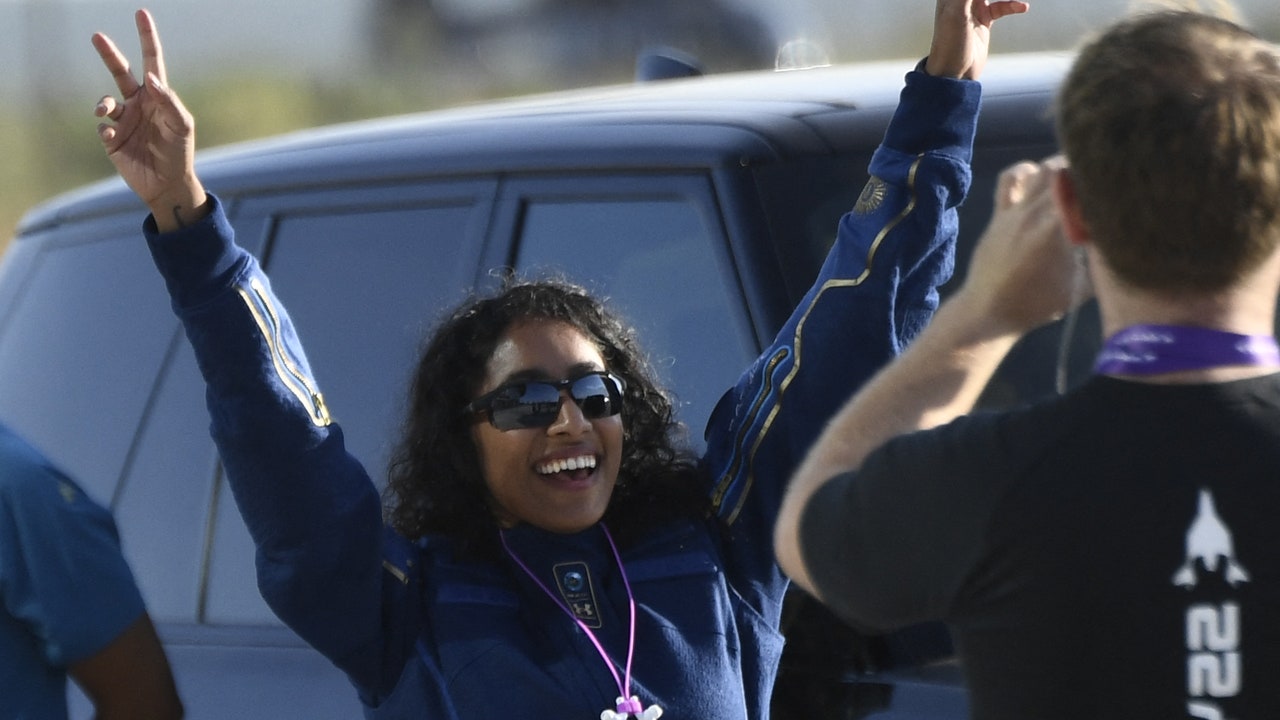The Age of Space Tourism Is Here—We Talked to the First Two Women On Board

[ad_1]
Sirisha Bandla was mid-somersault when she became the 66th woman in history to fly in space following the Virgin Galactic launch on Sunday. “When I heard ‘welcome to space’ I got myself to a window and looked out and I was just so taken aback,” says Bandla, a 34-year-old aeronautical engineer, who is now the second woman in history to make a commercial spaceflight.
Just 40 minutes prior, she’d boarded the VSS Unity, Virgin Galactic’s space plane, which climbed to a height of 50,000 feet with an assist from a fantasy-esque fighter jet “mothership,” detached in an elegant arc known as the “gamma turn,” rocketed to Mach 3 (that’s three times the speed of sound), and entered sub orbital space. Here, she and her crewmates floated weightless for a few transformational minutes.
“Our ship inverts and comes to a complete stop and there is a stillness, a timelessness, a peace at that crest that takes your soul away. It just takes your breath away,” says Beth Moses, Virgin Galactic’s chief astronaut instructor (and the 63rd woman to fly in space, the first passenger to fly in a Virgin Galactic test flight in 2019). “I had to remind people to slow down and look out the window because people were having so much fun with weightlessness.”
With a well-maneuvered backflip, the ship blasted back to Earth at over twice the speed of sound before gliding safely onto Spaceport America’s runway as if it were a commercial jetliner landing from L.A. and not an extraterrestrial mission.
It’s official: the age of space tourism is here.
On Sunday, July 11, Bandla, Moses and four other crew members of the Virgin Galactic launch of spaceship Unity made history with the company’s first fully crewed flight. Richard Branson’s Virgin Galactic (along with Jeff Bezos’s Blue Origin and Elon Musk’s SpaceX) is part of a new era of the space age aiming to commercialize space flight—for those able to afford it. Starting in 2022, you’ll be able to purchase a ticket on a Virgin Galactic flight, which will ultimately ferry six passengers and two pilots to suborbital space.
Eventually, the hope is that flights like this will help democratize spaceflight, which, before this weekend, only 562 people in history have had the chance to experience. (Though if you’re looking to go anytime soon, you might want to start saving—a ticket on a Virgin Galactic flight is $250,000.)
The human race wouldn’t be at this moment, where space travel has become (relatively) safe enough that you can literally buy a ticket to see it for yourself, without the contributions of intrepid women. It was a generation of “rocket girls” who started the project that would eventually become NASA’s Jet Propulsion Laboratory. It was a group of brilliant Black women—whose stories were finally told in Hidden Figures—who served as the “human computers” instrumental in putting the first man on the moon. It was Peggy Whitson who in 2017 set the American record for most time living in space (665 days). Bandla and Moses are the latest women to make space history as commercial astronauts.
[ad_2]
Source link